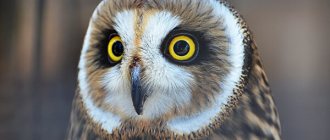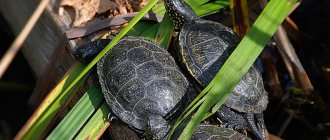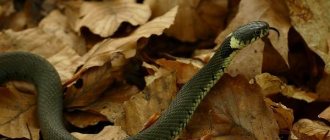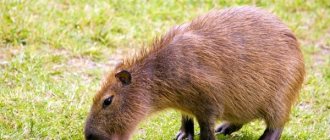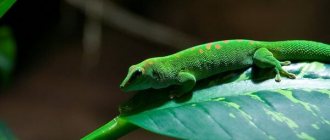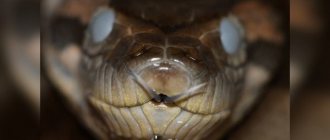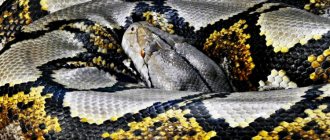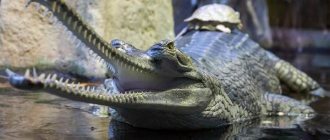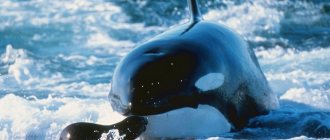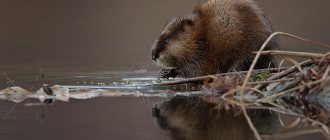Many people are interested in turtles due to the uniqueness of their way of life. One of the varieties of these reptiles is the marsh turtle. This is a wild animal, but if certain conditions are met, it can be made a true friend. It is important to understand what living conditions are optimal for it in the wild - this will help to understand the needs of the animal and ensure their satisfaction.
Description and features
The main terms that we will need when describing our semi-aquatic inhabitant are carapace and plastron. Carapace refers to the hard covering on a turtle's back. It has an almost round and curved shape, is very durable, it consists of horny tissue, and underneath it is a bone structure. Plastron is the same covering, only on the belly, and flatter.
In the European emyd, the carapace usually looks oval-shaped, slightly convex, with a glossy surface. It, like all turtles, is connected to the plastron by flexible ligaments that hold them together. The protective box is ready, the top and bottom are very strong, the sides are open.
It is not very convenient for them to constantly be in a limited state, but they are used to it, and compensate for this with great mobility of the neck, capable of bending like a periscope in different directions. In young individuals, the upper shield is more round in shape, with a low growth in the form of a “keel” closer to the tail
The tail of emids is quite elongated, usually it is ¾ of the size of the shell, and in the younger generation the tail is even longer relative to the shell. It serves as a “rudder” when swimming.
The front paws have five toes, the hind paws have four, and there are small swimming membranes between them. All fingers are equipped with large claws. Our heroine is usually of average size. The dorsal shield reaches 35 cm. The animal weighs about 1.5 kg.
The color of the carapace can be different, all the colors of the swamp range, from green with a gray tint to brownish-greenish. The habitat dictates the color of the camouflage. For some it may be dark to black. Most likely, the color is related to age and dietary habits.
Yellow streaks and specks are scattered across the entire surface. The scutellum on the belly is much lighter, usually an ocher shade (yellowish) or slightly darker, all speckled with charcoal color. All protruding parts of the body - paws, tail and head with neck - have a dark marsh color with ripples of ocher specks and strokes.
The eyes are the usual amber color for a reptile, although they can be orange and even red. The jaws are strong and smooth, there is no “beak”. The marsh turtle in the photo looks like a small bone chest.
It is compact, the oval “lid” is beautifully painted “antique”. If, moreover, the emida hid in her “house”, neither her paws nor her head are visible - she does not look like a living creature, more like an ancient box or a large stone.
Behavior
These reptiles are active during the day and sleep at night. To sleep, they go down to the bottom of the reservoir in which they live. During the day they prefer dry land to warm themselves. They are capable of moving several kilometers away from a body of water. They cannot stay in the water all the time - they need air to breathe, so the animals often float to the surface. They can survive without oxygen for about two hours. With low activity, the need for it disappears completely, since anaerobic respiration is activated.
These turtles swim well and quickly. When a threat is detected, they tend to hide in the grass or coastal mud. On land, the reptile also moves quite quickly.
Kinds
Turtles are relict animals that have lived on Earth for a very long time. It is clear that they have many family ties. A large family tree. To find out who our heroine’s relatives are, we need to dig down to at least the 3rd generation - “grandparents”. In other words, start with the family.
American freshwater turtles, to which our beauty belongs, were previously simply called freshwater turtles. So far, Asian freshwater animals have not been separated from the “family” due to some differences: their musk glands have ducts in some marginal plates (in the third and seventh pairs), as well as along the height of the 12th pair of marginal scutes.
Representatives of this subfamily are found in a large size range - from 10 to 80 cm. There are 20 genera, which include 72 species. The most numerous of them are aquatic, batagur, articulated. In the former USSR, the subfamily was represented by Caspian turtles living in Turkmenistan, Transcaucasia and Dagestan.
The American turtle family Emydidae, which remained after the division, included 11 genera, including 51 species. The largest by number of species are humpback, ornate, box, trachemus and Emys marsh turtles. They are small in size, some individuals have bright and unusual colors. Most of them come from America, but there are individuals living in other parts of the world.
The genus Emys is precisely the Eurasian specimen. This genus is now divided into two species: Emys orbicularis, a European marsh turtle, and Emys trinacris, a Sicilian species described recently, in 2015. So we got closer to our heroine. Emys orbicularis includes 16 subspecies included in five groups. The following varieties are found in Russia:
- Colchis marsh turtle , lives in the Black Sea region and southwestern Transcaucasia, as well as in eastern Turkey. She has a carapace measuring up to 16.5 cm, and a small head;
- Kurinskaya - lives in the Caucasus and on the shores of the Caspian Sea. Carapace approximately 18 cm;
- Iberian - settled in Dagestan, in the Kura River basin.
- The Eastern Mediterranean chose the south of Crimea, the upper shield of the shell is up to 19 cm.
- Nominative species Emys orbicularis orbicularis. In the Russian Federation, the habitat ranges from the western regions through the center to eastern Asia, the carapace is about 23 cm or more.
Lifestyle and habitat
The marsh turtle lives everywhere in Europe, except in the polar regions, as well as in Central Asia. Very widely represented on the Balkan Peninsula (Albania, Bosnia, Dalmatia) and in Italy. A common inhabitant of water bodies in northwestern Germany.
This species can be found in northern Africa, as well as in the Caucasus Range and closer to the western borders of Russia. Often found in the southern regions and central part of the Russian Federation. In the pre-glacial period, it was widely settled on the site of modern Europe; in some places, relict populations can still be found.
The landscape familiar to it is forests, steppes, foothills. Rarely, but may appear within a city or other settlement. She is able to “climb” into mountains up to 1400 m in height, and the Moroccans have seen even higher - 1700 m in the mountains.
Loves stagnant shallow reservoirs, calm rivers and swamps. It swims very quickly in water, so it easily catches its potential prey. It may not rise to the surface for a long time.
Experiments were carried out that showed that the emida, without visible effort, spent almost two days in a completely closed reservoir with a water temperature of 18º C. However, in nature, it still emerges almost every quarter of an hour to take a breath of air.
On land, the European tortoise is clumsy and crawls slowly. However, she is still more agile than her land relatives. Her energy and activity are more evident during the day. The reptile hunts and also sometimes comes out to bask in the sun, periodically again diving into the pond to cool off.
This behavior is called thermoregulatory support. Moreover, the animal is very careful, trying not to move far from the water. Sensing danger, it hurries to dive into the saving aquatic environment or burrow into the mud. Only at the moment of laying eggs can an emida move almost 500 m away from the water. In Turkmenistan, they were seen 7-8 km from water bodies, but this is rather an exception to the rule.
Regarding intelligence and intelligence, there are observations that these creatures are well trained, cunning and careful. And of course, no more stupid than other relatives. And in captivity they quickly adapt and become literally tame.
Closer to winter, they become numb, hibernating, after hiding in the silt or ground. By the way, sometimes they do this during drought. Usually wintering begins at the end of October, but in warm winters it can begin later, and sometimes is completely canceled.
Availability
The bog turtle can be found commercially or caught in the wild during the warmer months. But, with normal maintenance, owners with zero experience in breeding turtles successfully produce offspring.
All individuals kept in captivity are unpretentious and easy to care for.
However, it is important to note that to keep a marsh turtle, you need to create fairly precise conditions. And just bringing it and putting it in a basin won’t work. If you catch a turtle in the wild and you only need it for fun, then leave it where you found it. Believe me, this way you will make your life easier and will not kill the animal.
Nutrition
It has already been mentioned that the turtle is very agile in water. Catches worms and insects, frogs and fish, and first bites off the swim bladder of the latter. Then he throws it out, and it remains floating on the water. This way you can understand whether turtles live in a pond or river.
If you see fish bubbles on the surface of the water, you can be sure that there is an emida there. Previously it was believed that she was a night hunter. However, the reptile just rests at night, falling asleep at the bottom of the reservoir. And early in the morning he goes hunting, and does this all day, with the exception of short breaks.
She does not refuse mollusks, crustaceans, dragonflies and mosquito larvae. In the steppes it catches locusts, in the forest - centipedes and beetles. Attacks small vertebrates, small snakes and waterfowl chicks. She does not disdain carrion, eating the corpses of small animals and birds.
So fish is not her main dish. Priority is given to “meat” products. Therefore, fears that marsh turtles are damaging fish ponds by catching all the fish are incorrect. Observations showed that most of the emida's attempts to hunt healthy fish failed, and the prey managed to elude the hunter.
Of course, if our reptile found itself in places with large concentrations of these aquatic inhabitants, then the likelihood of a successful attack increased. In the fauna, the turtle plays an important role as an orderly for its native reservoir, as it destroys carrion, and also as a breeder, since it can selectively catch only weak and sick individuals.
With the caught prey, she goes to the depths and deals with it there. It tears large pieces into pieces using powerful jaws and sharp claws. Plants are not a priority on the menu. She can chew algae and the juicy pulp of other plants, but this is rather an addition to the main “meat” diet.
Diseases
Swamp reptiles rarely get sick, but prolonged stay in unsuitable conditions and improper feeding provoke:
- Colds and pneumonia. Occurs in the absence of heating. Treated with antibiotics according to doctor's instructions.
- Cracked skin, inflammation of the eyes. They are found in marsh turtles in conditions of poor aquarium hygiene. When the first signs appear, wash the turtle in clean water, as well as the decorations, aquarium walls and soil. Fill the reservoir with water and turn on the ultraviolet lamp for 15 minutes. Improve your pet's condition after treatment and contact your veterinarian for treatment.
- Rickets. Accompanied by deformation of the shell. Advanced disease causes pulmonary edema and heart failure.
- Injuries. A lack of calcium makes the animal susceptible to injury.
- Helminthiasis. Parasites are introduced with live food. Contact your veterinarian or consult about medications and dosages on special forums.
Reproduction and lifespan
The instinct to procreate comes to them at the age of 5-9 years, which is when turtles mature. The mating season begins immediately after the gradual awakening from hibernation. This does not happen everywhere at the same time, but depends on the climate in the regions. In our temperate latitudes it is April-May.
By that time, the air warms up to +14º C, and the water - to +10º C. The event can take place both in water and on land. If at this moment they are in shallow water, then the backs of the males are visible, which rise above the surface of the reservoir, but the female is not visible, she is completely in the water under them at that time.
The process takes 5-10 minutes. Eggs are usually laid near their native waters. But there are also exceptions. Particularly restless turtles, in order to find a more secluded place for their future offspring, go quite far from home. In warm areas, a female manages to make 3 clutches per season, in cool areas - 1-2.
To lay eggs, the mother digs a hole up to 17 cm deep within 1-2 hours, working with her hind legs. The shape of this depression resembles a jug with a bottom of about 13 cm and a neck of up to 7 cm. She also prepares the place for the hole in advance, carefully clearing a small area of earth with her front paws and head.
The eggs come out gradually, 3-4 eggs approximately every 5 minutes. The number of eggs varies, reaching 19 pieces; they have a hard, white, calcareous shell. They have the shape of an ellipse, measuring from 2.8 * 1.2 to 3.9 * 2.1 cm, and weigh 7-8 g. After all, the female digs a hole and carefully levels the ground above it with her belly, like a bulldozer, masking the laying site.
The incubation period lasts from 60 to 110 days, depending on the climate of the region. Hatched turtles do not immediately rush to the surface. On the contrary, they burrow deeper, overwinter underground and emerge only in the spring. True, there are brave souls who still crawl out and dive into the pond. Then they spend the winter under water.
All babies have a very dark color, closer to black, with only light specks in places. They have a yolk sac on their belly, from which they feed throughout the long winter. Their carapace size is about 2.5 cm, body weight is about 5 g. Turtle nests are constantly destroyed by all predators that are able to reach them.
Swamp turtle eggs are tasty; foxes, otters and crows are not averse to eating them. It is not precisely established how many years these creatures live in nature, but in terrariums their usual age is up to 25 or 30 years. There were cases when emids, with careful supervision, lived up to 90, and even up to 100 years, and in the south of France, in one botanical garden, an age of 120 years was recorded.
Breeding
Reptiles reach sexual maturity at different ages; the process is influenced by the sex of the animal and lifestyle. If they live in an aquaterrarium, then females reach sexual maturity by 5-6 years, males by 4 years. In nature, turtles mature only at 8 years of age. The “wedding” period for reptiles occurs in the first spring months. The male approaches the female he likes, pokes his muzzle into her and begins to tickle her chin with his claws.
The female lays her eggs on land, in an area that she first prepares: she moistens it with water from her own anal bladder and digs a hole. The clutch consists of 5-10 eggs, the size of which is no more than 4 cm. When the laying process is completed, the female carefully buries the future offspring.
The incubation period is long and lasts up to 21.5 weeks. An interesting fact is that the sex of hatching turtles depends on the temperature: if the indicator remains above 30°C, then females appear, and if below 27°C, then males.
Swamp turtle at home
More often than not, animal lovers are very happy to have a marsh turtle at home. She is not capricious, lives long enough, and does not cause allergies or disorder in the house. And she doesn’t meow, doesn’t yap, doesn’t chirp, in general, doesn’t make noise. The perfect example of a pet.
If you decide to have adult emids at home, you need a spacious aquaterrarium with a volume of 150-200 liters with an attached shelf and an island made of stones that imitates “land”. It would be good if water and land were approximately equal areas, for example, in a ratio of 1:1 or 2:1.
Do not make the depth more than 10-20 cm, they do not like large bodies of water. Water should be filtered and changed frequently. Attach a local heating lamp above the “island”. During the day, the temperature under the lamp is maintained from +28 to +32ºС, and in the water from +18 to +25ºС. No heating is needed at night.
Caring for a marsh turtle necessarily requires the presence of an ultraviolet lamp with a small safe radiation. It needs to be turned on periodically. This is necessary to strengthen the bones and shell.
Without a UV lamp, the reptile will not receive enough vitamin D and will not absorb calcium well. Because of this, it will begin to grow more slowly, the shell will become irregularly shaped, and your pet is at risk of getting sick. In addition, Emida is the final host of parasites of various species. UV rays have a preventive effect on her health.
Don't forget to cover the pond with a lid. These “babies” are very active, climb well and can escape from indoors. Plants and soil in the container are optional. Adult turtles will uproot plants, only young turtles will not be able to seriously damage the plantings. Turtles are housed either alone or in company with related non-aggressive species.
what to feed swamp turtles if you remember what they eat in the wild. Choose small river or sea fish for feeding, indulge in earthworms and snails. You can offer her shrimp, small food insects - crickets and cockroaches.
It would be nice to sometimes give them a small frog and a mouse as food, but you can replace them with pieces of meat and offal. Buy special food for turtles at the pet store, or for cats or dogs. Feed the young with mosquito larvae (bloodworms), gammarus crustaceans, large daphnia, and small insects.
Sometimes you need to add fiber to your diet - grated carrots, cabbage, lettuce, banana pieces. Adults are fed 2-3 times a week, young ones - every day, then gradually increasing the intervals between feedings. Be sure to provide mineral supplements for reptiles.
Emids can breed in captivity. You just need to respect the change of seasons. They need a period of rest - wintering. First, they stop feeding them so that the stomach can rest and the intestines can be cleansed. At the same time, they begin to shorten the daylight hours and reduce the temperature to +8-10 ºС.
Within four weeks, the preparation should be completed and the turtle will fall asleep for 2 months. They are also brought out of hibernation smoothly. If the turtle does not plan to reproduce, or is sick, it does not need hibernation.
The animal usually gets used to the person, recognizes him, reacts to the feeding ritual, and can swim up to the tweezers with a piece of food. They are not very aggressive, but you have to be careful not to accidentally harm her. Then she is able to bite noticeably. Their bites are painful, but safe.
Land zone
It is needed so that reptiles can rest, warm up and dry out their shells.
The optimal temperature in the area of a land island is considered to be 30–35 degrees above zero, which is achieved by installing an ordinary incandescent lamp over this area.
It should be placed at a height of 25–30 cm from the surface of the land so that the animal does not receive burns. In addition, you should install a small ultraviolet lamp.
The fact is that UV rays promote the production of calcium in the turtle’s body, which is vital for the proper formation of the shell.
Many experts recommend feeding the animal on such an island, gradually accustoming it to this. If you achieve this “land” method of feeding, the water will maintain its purity longer.
How to find out the gender of a marsh turtle
Many people are interested in the question of how to find out the gender of a marsh turtle . You can determine the sex of a 6-8 year old turtle with a shell length of at least 10 cm. It’s good if you put several specimens side by side for comparison. Remember the signs:
- “gentlers” differ from “ladies” in having a slightly concave plastron, and their tail is longer and thicker;
- “men” have longer claws on their front paws;
- the male carapace, compared to the female one, looks narrower and elongated;
- the star-shaped cloaca (hole) in the “girl” is located closer to the edge of the carapace than in the “boy”; in him it is in the form of a longitudinal strip located 2-3 cm from the edge of the shell;
- the posterior end of the plastron in “men” is V-shaped, in “women” it is rounded with a hole of large diameter;
- females have a flat, and more often convex plastron, like an “abdomen.”
And here the “ladies” look rounder and more “appetizing”!
What is the price?
Prices for a red-eared turtle range from 100 to 2500 rubles.
If you are a beginner, you may not be able to cope with several turtles at first, so you should first buy one pet, and after a while another one.
During the warm season, the purchased animal can be carried home in a plastic container or box with sawdust. If it's cold outside, it is recommended to put a heating pad in the box. You can also wrap your pet in a cloth and hide it under a jacket.
Interesting Facts
- Turtles are afraid of surprises and always try to hide from them in the saving water element, sometimes even at the risk of their lives. In the Caucasus, turtles were seen jumping from a three-meter height into the water out of fear.
- Turtles have a sensitive sense of smell. They quickly found pieces of meat wrapped in paper in the water.
- The male's sperm is stored for a very long time; it can be kept in the female's genital tract for about a year or more. Therefore, an emida may unexpectedly lay eggs after six or more months of captivity. Don’t be surprised, this is not a miracle, the fertilization trigger just worked.
- In 2013, at the Zoological Museum of the Dnepropetrovsk Agrarian University, several marsh turtles hatched from eggs stored on shelves as exhibits. How they survived in such unimaginable conditions for incubation is unclear. This event really looks like a small miracle.
- It is interesting that in turtles, sex separation depends on the ambient temperature - if incubation takes place at temperatures above +30º C, only “girls” emerge from the eggs, and below +27º C – only “boys”. In the interval between these figures there is a balance between the sexes.
- In the Middle Ages in Europe, turtles were considered a delicacy and were often used as food. The church considered their meat lean, like fish.
- There are monuments to the marsh turtle in Latvia. In the city of Daugavpils, sculptor Ivo Folkmanis built a monument from light African granite in 2009, after a year of work. And in Jurmala, a bronze sculpture on the seashore has been standing for more than 20 years, since 1995. Both figures are created in honor of the large population of these turtles in the country.
Protection measures
This species is listed in the Red Book of the International Union for Conservation of Nature (RL/nt), in provision II of the Berne Convention, and in the Red Book of the Republic of Bashkortostan. The population of this turtle species is in danger of extinction. Recent studies show that it is being replaced by a related species such as the American marsh turtle.
The main reasons for the decline in the number of the species are fishermen, land reclamation, and urbanization. A person finds marsh turtles near bodies of water or far from them. Most often, these are females who are looking for a good place to lay eggs at the mouths of rivers, and moving away from their usual habitat for a number of kilometers. People don't realize the damage they cause to nature when they take a turtle into their home. Even the best conditions in captivity can never replace natural ones. And very often turtles are kept in basins or, by and large, behind a closet, under a radiator, etc. When treated this way, the animal slowly dies over many years. Irreversible pathological processes occur in the turtle's body. For example: dehydration (the turtle dries out, the skull bones stand out on the head, the epidermis begins to adhere to the bones), loss of swimming membranes, overgrowth of the choanae, which can cause respiratory pathology, respiratory diseases, lack of heat leads to serious gastrointestinal diseases, various kidney pathologies, drying out and loss of the tip of the tail.
